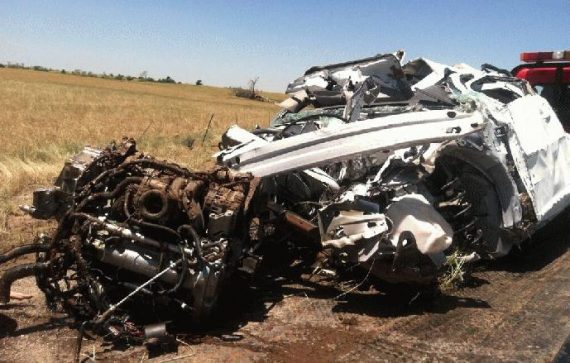Three Storm Chasers Killed In Friday’s Oklahoma Tornadoes
The tornadoes that moved through Oklahoma, Arkansas, and Missouri on Friday were, fortunately, far less destructive than the May 20th tornado that hit Moore, Oklahoma, but they ended up claiming the lives of three people who had dedicated their lives to following these most dangerous of storms up close and personal:
Storm chaser and meteorologist Tim Samaras, his storm chaser partner Carl Young, 45, and his son Paul Samaras, 24, were among the 11 people killed in the latest round of tornadoes and severe weather to hit Oklahoma Friday night, according to family members.
They were killed near El Reno in an EF3 tornado with winds up to 165 mph that ripped through the Oklahoma City area during rush hour.
“They put themselves in harm’s way so that they can educate the public about the destructive power of these storms,” Canadian County Undersheriff Chris West told the Associated Press.
Tim Samaras, 55, dedicated the last three decades to learning about tornadoes while he successfully combined his passion for storm chasing and an engineering career.
“I’m not sure exactly why I chase storms. Perhaps it’s to witness the incredible beauty of what Mother Nature can create” Samaras said in aYoutube video posted on his website.
Samaras’ brother, Jim Samaras posted a statement on Tim Samaras’ Facebook book early Sunday morning:
“It truly is sad that we lost my great brother Tim and his great son, Paul. Our hearts also go out to the Carl Young family as well as they are feeling the same feelings we are today,” the statement said. “They all unfortunately passed away but doing what they LOVED. Chasing Tornado’s. I look at it that he is in the ‘big tornado in the sky…'”
At first glance, what these men and those like them do seems insane. Driving into a tornado laden storm just when it is at it’s peak? Crazy right? Well, the truth of the matter is that these storm trackers end up providing invaluable data to the National Weather Service and other meteorologists that allows them to get a better idea of the path and intensity of a storm, and to get the warnings out to the appropriate areas. No doubt, these three men saved many lives during their years of living a real life version of Twister. Additionally, the vehicles that the true professionals use are nearly as heavily armored as the vehicles the US military used in Iraq. It just appears that, this time, these three men ended up being in the wrong place at the wrong time when an unpredictable storm led to a tornado touchdown in an area other than the one they were expecting it to.
Photo via WTVC (Chattanooga, TN)


Are you sure about your facts? That wreck picture certainly isn’t of an armored vehicle. Neither has the recent videos of chasers getting to close shown armor, taking normal safety glass windshield damage.
There is value in the visual reports but it does seem that quite a few of these chasers are getting to close to up the thrill and the video effect.
Perhaps these storms have been particularly random.
I think armored storm chasers were a fad, but most in clips just seem to use minivans (which have really terrible side-wind resistance).
Me? I’d use something street legal like a Brinks truck, and load it with a couple tons of sand.
@john personna:
Yeah, they need something heavy with a low center of gravity. Low to the ground to avoid lifting winds. Plus sloped sides to deflect debris. High impact lexan or better windows and some penetrations resistant material in the side panels if they don’t go thick steel.
I’ve seen hay driven through a tree by a tornado, right near where the box and coal cars had been knocked off the track.
I respect them. As a scientist I took risks when I explored caves and climbed mountains to gain knowledge. Friends of mine have been killed in the search for knowledge, One on Mt St Helens when it erupted. It would seem to me that such risks contribute more than risking one’s life in war in the long run. Wars won or lost rarely have any long term impact while knowledge is forever
The guys who are trying to spot them to warn people certainly deserve respect, but these guys seeking to get as close as possible? Some appear to be thrill-seekers justifying an adrenalin habit with a “gathering data” cover story. Precise measurements of wind-speeds within the funnel are unlikely to be useful, and if they were they could be gathered by staking-in instruments in likely paths.